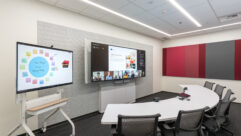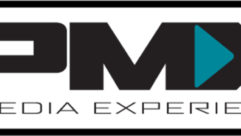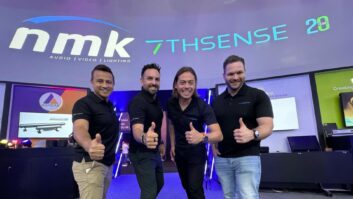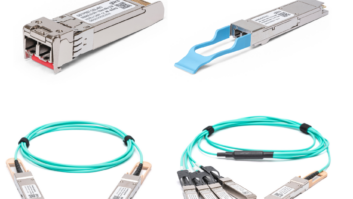Everywhere I look, AV is playing a larger role in our day-to-day lives. There’s e-mail, conferencing, IM, document store, presentations, the mobile phone. Then we have tablets, laptops, and PCs, all portable and giving us, the user, an unhealthy attitude that things should “just work.” But things will only “just work” if they are prepared.
Why then is AV still an afterthought when it comes to new builds or refits? How many times have you entered a room only to face the spaghetti nest of cables under a desk, lack of power outlets, or a long cable hanging from a dated ceiling projector? Why is that? Because in the early stages of any project, AV is still considered a cosmetic expense rather than a need. It can be easily trimmed from a budget or be retrofitted—albeit not easily, not tidily, and generally not as cost-effectively as it would be with little bit of forethought.
Power. There’s never enough. Floor boxes are placed to accommodate a fixed square layout, but as we move towards multifunctional spaces, we need to plug-in safely from anywhere to anywhere without a trailing extension cable. Some forethought perhaps: put a floor box near a reinforced wall to pre-empt a display being installed. Look at how many different configurations are possible for your tables and pop a couple of floor boxes off-center. A splash of planning could save a world of headache later on, even if the cabling is in place and it only needs to be terminated at a later date.
Glass. Yes, of course we need windows. But glass is an AV nightmare. Glass reflects sound and it also reflects light. Consider blackout blinds—any blinds really—curtains or even canvas or prints on walls to limit reverb. Maybe even consider acoustic panelling, or an acoustic consultant. Just remember that light and airy spaces are not always ideal for technology and anticipate the impact on the users’ AV experience.
BYOD. The cross-over between the personal and business devices has become so blurred that we need to accommodate everything, everywhere, all of the time. In addition to my mobile phone and laptop (and a backup USB stick, just in case I can’t connect to a suitable display) I have three things that let me run demos regardless of where I am. These include a four-way extension cable, a USB converter to connect to a Web-based conferencing application and headphones which allow people to hear how good audio can be in the absence of speakers. Have I taken BYOD too far? Nope, I’ve just evolved, and it’s a fair chance your clients have too.
Analog signals are being quickly replaced with digital. Yet how do we ensure that someone can connect any device to any display? Well, we can’t. But we can do our best. A standard install for me was a VGA and HDMI presented at the tabletop. Yes, it added in a couple of extra cables and a switcher/scaler, but in the long run it’s worth it. There are technologies offering wireless presenting but these can also have drawbacks. Network access is one. The PC seeing the USB as a storage device and then blocked by a company’s firewall is another. A hardwired solution can deliver little to no latency and will simply “just work,” but in the age of wireless, there are plenty of options to accommodate.
Small things mixed with a little forethought or “future-proofing” can lead to fewer problems, happier customers, and repeat business. So the next time you are trying to reduce a budget, planning a room layout, or considering putting technology in an existing room, have a good think—who will use the room? What applications will need to be accommodated? Liaise with both AV and IT early on. Because until both departments amalgamate completely, there will always be an air of discontent about putting AV onto an IT network or vice versa. So save yourself the headache and have a little think!
Open Mic: Plan for AV Now and Eliminate Headaches Later On
Thinking out solutions beforehand means fewer problems, happier customers, and repeat business










